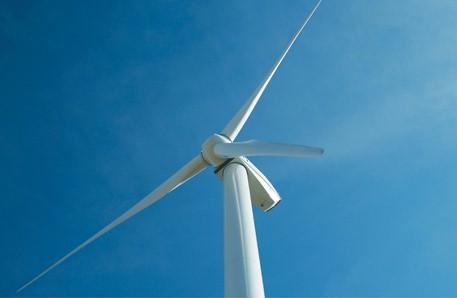Title: “Whirling Winds of Power: Decoding the Energy Output of a Single Wind Turbine”
(Gale Generators: How Much Power Does a Single Wind Turbine Produce?)
In the vast expanse of our planet, where the sun shines brightly during the day and the moon guides us through the night, there’s an untapped source of energy that’s been around since the dawn of time. This source is not a new invention or a complex technology but a natural phenomenon – the wind. And at the heart of harnessing this power lies the humble yet mighty wind turbine.
Imagine standing amidst a field of these giants, each one a testament to human ingenuity and nature’s beauty. These aren’t just machines; they’re like the guardians of our future, whispering tales of clean energy and sustainable living. But how much power do these marvels of engineering really produce? Let’s dive into the fascinating world of Gale Generators.
### The Dance of Air and Power
A single wind turbine, when fully operational, can produce a significant amount of electricity. The exact output varies based on several factors, including the size of the turbine, its efficiency, the wind speed, and location-specific conditions. But let’s simplify this by focusing on a standard, medium-sized turbine for our discussion.
### A Day in the Life of a Wind Turbine
Picture the sun setting, casting long shadows across the horizon. As the sky darkens, the wind picks up, carrying with it the promise of energy. The blades of the wind turbine start their slow, yet powerful, rotation, capturing the kinetic energy from the air currents. This motion is converted into mechanical energy by the turbine’s gears, which then drives an electrical generator to produce alternating current (AC) electricity.
### The Numbers Behind the Power
Now, how much power does this generate? Well, a typical medium-sized wind turbine might produce between 1 to 3 megawatts (MW) of power. That’s enough to supply energy to hundreds of homes! To put this into perspective, consider that one MW can power about 800 average U.S. households. So, a single turbine can potentially provide clean energy to a small town or even a village!
### The Impact of Wind Speed
Wind speed plays a crucial role in determining how much power a turbine can generate. Generally, turbines perform best in winds ranging from 10 to 25 miles per hour. At these speeds, they operate most efficiently, producing the maximum output. However, they can still generate some electricity even in lower wind speeds, albeit at a reduced capacity.
### Beyond the Numbers: The True Value of Wind Power
While the figures above give you a sense of the sheer power a single turbine can produce, the real value lies in the broader context of environmental impact and sustainability. Wind energy offers a cleaner alternative to fossil fuels, significantly reducing carbon emissions and contributing to a healthier planet. It’s an investment in our future, ensuring that we meet our energy needs without compromising the health of our environment.
### Conclusion: Embracing the Wind
So, the next time you see a wind turbine, remember it’s more than just a machine churning out electricity. It’s a symbol of our commitment to clean energy and a step towards a greener, more sustainable future. The power of a single wind turbine may seem small, but when multiplied across the globe, it becomes a force that can truly change the world.
(Gale Generators: How Much Power Does a Single Wind Turbine Produce?)
In the dance of air and power, let’s continue to embrace the winds of change and build a brighter, more sustainable tomorrow together.
Inquiry us
if you want to want to know more, please feel free to contact us. ([email protected])




